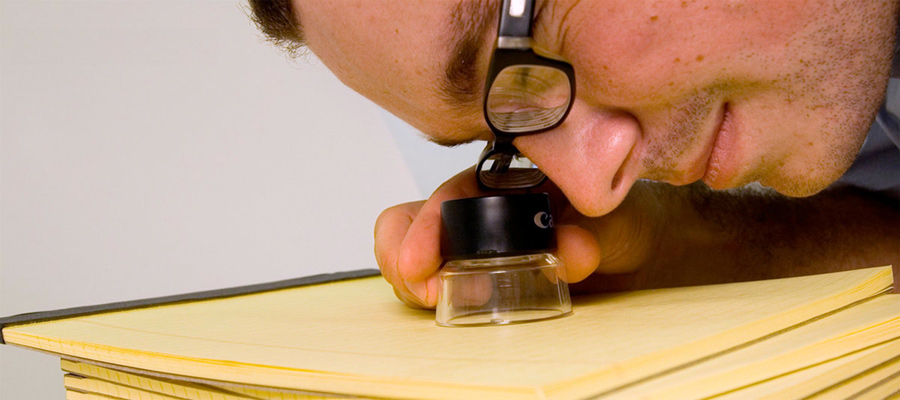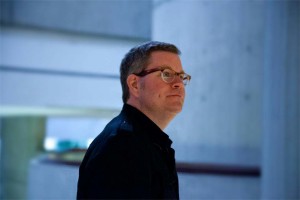April 10, 2014
CAN Media (C): Please tell us “Notepad” project.
Matt (M): The Notepad is an act of protest and commemoration disguised as a stack of ordinary yellow legal pads. Each ruled line, when magnified, is revealed to be microprinted text enumerating the full names, dates, and locations of each Iraqi civilian death on record over the first three years of the Iraq War. A printed edition of 100 notepads, was covertly distributed to US representatives and senators, as a sort of Trojan horse, injecting transgressive data straight into the halls of power and memorializing it in official archives. SWAMP is now working on a new edition that takes into account the American incursion into Afghanistan; with the disclosure of confidential information by WikiLeaks.


C: Could you explain the process of the work? Especially, please explain how you distributed the notepad to representatives and senators.
M: I remember this interview conducted in November 2003, when Fox news asked Secretary of Defense, Donald Rumsfeld, “We hear about our death counts. We never hear about theirs. Why?”, to which he replied, “We don’t do body counts on other people”. I wanted to acknowledge the civilians who have died as a result of the US invasion, while at the same time slipping this data into the US governmental archives where it can exist literally as a subtext to the fallen US service persons.
On the one hand, the choice of using the notepad came about by recognizing the potential for exploiting the formal elements of the printed lines. Additionally, the notepad has a real physical presence, and this is important for how the work lives. By occupying the same physical space as the legislators responsible for these deaths (in fact it is right under their noses) the paper reminds us how one cultural form may hide another more sinister cultural form. Much like the message it espouses, SWAMP’s Notepad hides in plain sight. The message is nothing else than the printed names of slain Iraqi civilians, and by being concealed by scale, further emphasis is given to the US government’s disregard for casualties amassed during its occupation of Iraq.
I used several techniques to distribute the Notepad, some I can speak about openly, some I cannot. For instance, I have exhibited the work in a way that allows viewers to use the Notepad as stationary write their representatives in government.
C: Did you inform representatives and senators about the project afterword? If so, what was the response from them?
M: No, I have not had a response from the US government. But recently I had a meeting with Danish politician Mogens Lykketoft former government minister and current Speaker of the Folketing. Lykketoft was the foreign minister during the move to invade Iraq. Our conversation can be found online at https://vimeo.com/78312023
C: What was the response from the audience in general regarding this work?
M: This work has been well received by audiences and was recently acquired by the permanent collection of the Museum of Modern Art. Notepad is currently in an excellent show in Davidson NC. The exhibition features 18 contemporary artists working in a variety of media including artists: Ai Weiwei, and Mel Chin. I am very honored to have Notepad shown next to Ai Weiwei’s The Names of the Student Earthquake Victims Found by the Citizens’ Investigation.
C: Please tell us funny episodes regarding this project if you have.
M: After working with the Notepad I find myself giving “normal” pads of paper a second glance. I think there is something about the Notepad, after you see the names microprinted within the lines-it changes the way you see everyday pads of paper.
C: Would you tell me what you think of “Art” and “Artist?”
I’ve been a fan of early punk rock music for a while. Their DIY approach to music and culture was inspirational to me as a younger artist. There is this great Jello Biafra quote, “Don’t hate the media, be the media”. I like to work with media and technology because (a) I am familiar with them and like the power they hold, and (b) I hate them and I am afraid of the power they hold. I keep returning to this fantastic RE-Search interview with Mark Pauline from several years ago. In it he discusses how his passion for hacking industrial technologies is to ensure that artists have their hands on them—that they aren’t simply used for utility.
Bio
Matt Kenyon is an artist and educator who focuses on critical themes addressing the effects of global corporate operations, mass media and communication, military-industrial complexes, and general meditations on the liminal area between life and artificial life
SWAMP (Studies of Work Atmosphere and Mass Production) of was founded in 1999 by artists Douglas Easterly and Matt Kenyon who collaborated from the years 1999-2012. Kenyon now runs SWAMP solo in addition to being an Associate Professor in the Stamps School of Art & Design at the University of Michigan in the United States. Kenyon has been making work in this vein since 1999 using a wide range of media, including custom software, electronics, mechanical devices, and often times working with living organisms.
Kenyon’s work received the distinguished FILE Prix Lux Art prize as well as first prize in VIDA 7.0 Art and artificial life completion. Kenyon’s work has been shown at the Museum of Modern Art, NYC; Exit Art, NYC; Science Gallery, Dublin Ireland; The Edith Russ Site for Media, Oldenburg, Germany; The Foundation of Art and Creative Technology, Liverpool, England; SIGGRAPH Art Gallery, San Diego, California.

